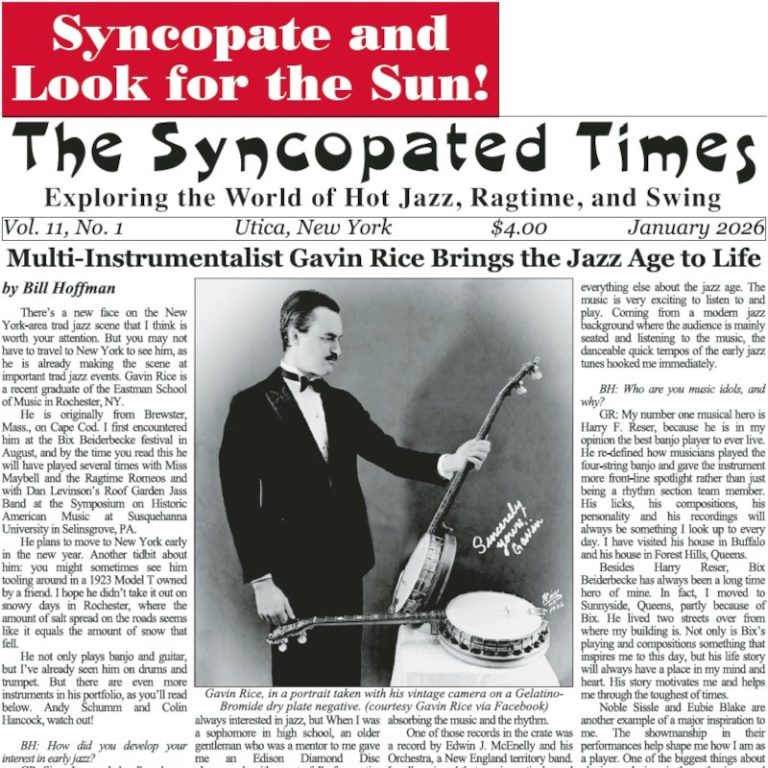Interracial Jazz Recordings Before 1935: An Introduction
Over the last 20 years, the trend has been to interpret jazz history through the lens of current critical thinking about race and gender—a necessary corrective to writing that elided or made short work of the racism and sexism prevalent in the history of American popular music. It’s important to note that, because of racism and sexism, a lot of music performed between 1890 and 1920 did not become a part of our recorded legacy.
However, outside of recording studios, something else was going on. Racial walls between musicians were more porous than the de facto and de jure walls of segregation. There was always contact between musicians of color and white musicians, as love of the music provided a bond that transcended prevailing cultural mores—and this contact increased as time went on. There is ample evidence —written, oral, and recorded—of the amity and mutual respect that jazz musicians of all races and genders had for each other. Musicians of different races were unable to play publicly on the same stage (with rare and complicated exceptions), but after-hours jam sessions, rent parties, and other unofficial spa
You've read three articles this month! That makes you one of a rare breed, the true jazz fan!
The Syncopated Times is a monthly publication covering traditional jazz, ragtime and swing. We have the best historic content anywhere, and are the only American publication covering artists and bands currently playing Hot Jazz, Vintage Swing, or Ragtime. Our writers are legends themselves, paid to bring you the best coverage possible. Advertising will never be enough to keep these stories coming, we need your SUBSCRIPTION. Get unlimited access for $30 a year or $50 for two.
Not ready to pay for jazz yet? Register a Free Account for two weeks of unlimited access without nags or pop ups.
Already Registered? Log In
If you shouldn't be seeing this because you already logged in try refreshing the page.




